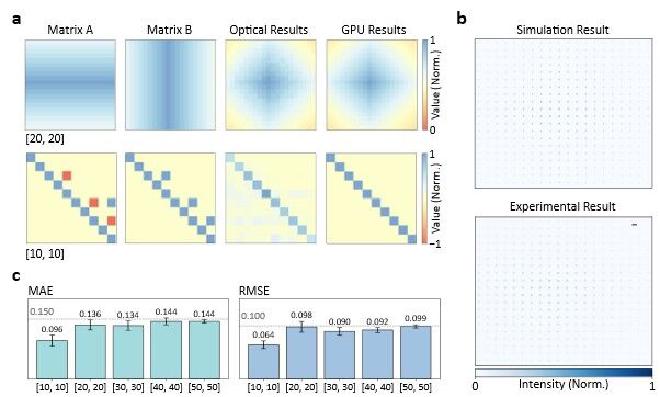

Today, every task in AI, from image recognition to natural language processing, relies on tensor operations. However, the explosion of data has pushed conventional digital computing platforms, such as GPUs, to their limits in terms of speed, scalability and energy consumption.
“Our method performs the same kinds of operations that today’s GPUs handle, like convolutions and attention layers, but does them all at the speed of light,” said Dr. Zhang. “Instead of relying on electronic circuits, we use the physical properties of light to perform many computations simultaneously.”
To achieve this, the researchers encoded digital data into the amplitude and phase of light waves, effectively turning numbers into physical properties of the optical field. When these light fields interact and combine, they naturally carry out mathematical operations such as matrix and tensor multiplications, which form the core of deep learning algorithms. By introducing multiple wavelengths of light, the team extended this approach to handle even higher-order tensor operations.
*Another key advantage of this method is its simplicity. The optical operations occur passively as the light propagates, so no active control or electronic switching is needed during computation.
“This approach can be implemented on almost any optical platform,” said Professor Zhipei Sun, leader of Aalto University’s Photonics Group. “In the future, we plan to integrate this computational framework directly onto photonic chips, enabling light-based processors to perform complex AI tasks with extremely low power consumption.”

“This will create a new generation of optical computing systems, significantly accelerating complex AI tasks across a myriad of fields,” he concluded.
Citation #
-
The study Direct tensor processing with coherent light was published in Nature Photonics. Authors: Yufeng Zhang, Xiaobing Liu, Chenguang Yang, Jinlong Xiang, Hao Yan, Tianjiao Fu, Kaizhi Wang, Yikai Su, Zhipei Sun & Xuhan Guo
-
The article AI at the speed of light just became a possibility was published in Aalto’s’ University website
Contact [Notaspampeanas](mailto: notaspampeanas@gmail.com)

